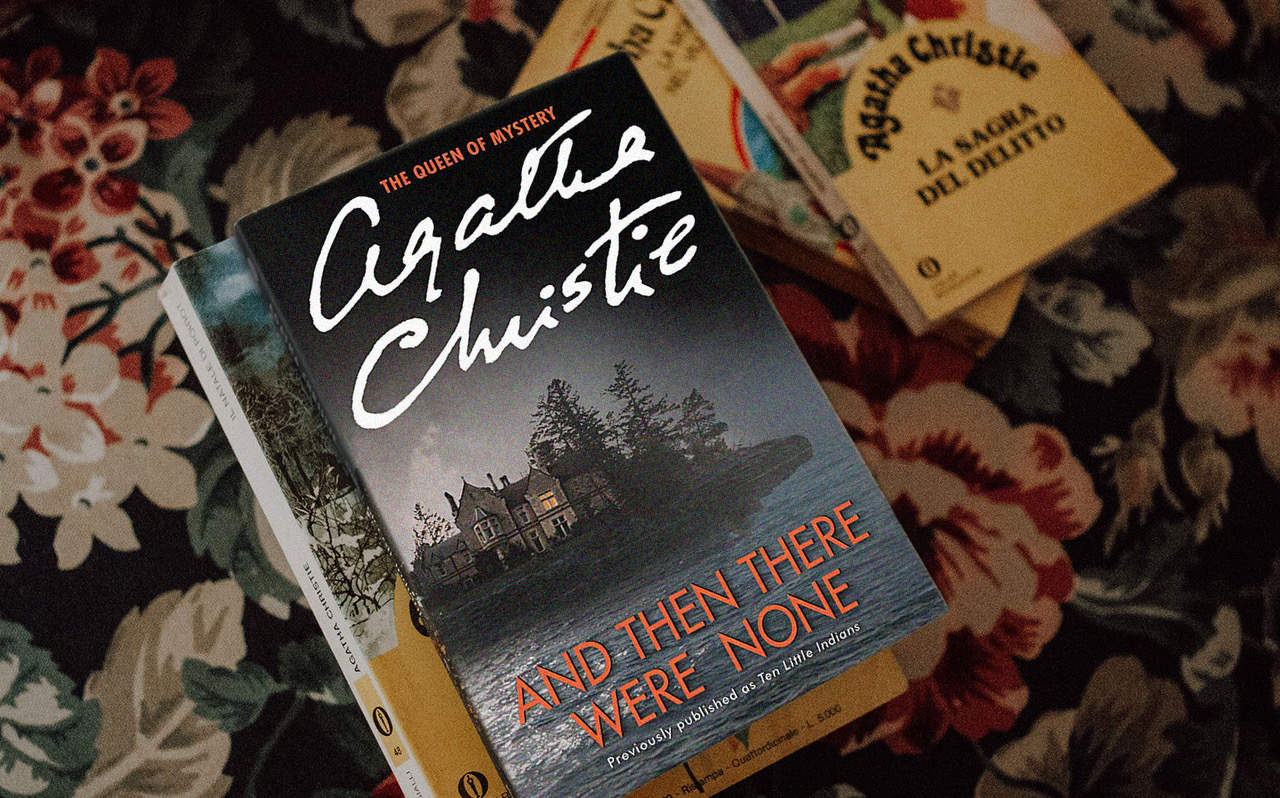
A Thrilling Mystery: Agatha Christie’s And Then There Were None
Agatha Christie is the greatest mystery writer of all time. She wrote 66 detective novels, 14 short story collections, and one of the world’s longest-running plays, The Mousetrap. Her books have sold over 2 billion copies in English and translations combined. Since it was published in 1939, And Then There Were None is one of many of Christie’s murder mystery novels that have stood the test of time.
The novel is set on an isolated island off the coast of England. At first, there were ten. A mysterious millionaire invites ten strangers to a private island, but upon arriving, they discover he is nowhere to be found. All ten characters have one thing in common: they all got away with a terrible crime in the past. As they begin to die, it becomes clear that each has been marked for murder. Inside the living room of the mansion, a framed nursery rhyme hangs on the wall. When the guests realize that the murders are occurring the same way the nursery rhyme describes, it seems as if there is nothing they can do to avoid their fate. Before the weekend is done, there will be none.
And Then There Were None is my favourite murder mystery novel because the characters in the novel are so intriguing and memorable.
They are all distinct and well-developed, with secrets and flaws unfolding as the story progresses. The reader can sympathize with some and despise others. Agatha Christie does an excellent job of making each person unique so that the reader never feels overwhelmed by the number of characters. As the story progresses, the reader is constantly surprised by new revelations, which will keep you guessing until the end.
The story is told from multiple perspectives, allowing the reader to see the events unfold from different angles and gain insight into the thoughts and motivations of the characters, building suspense and intrigue. The reader becomes more invested in the story as the characters reveal their hidden motivations. Relationships between the characters are fraught with tension. They are forced to form uneasy alliances as each character is killed off and the number of suspects dwindles, intensifying the mystery.
The setting of the isolated island also creates a sense of tension and unease that permeates the novel.
The guests are cut off from the outside world, with no way to escape the island or call for help, which adds to the feeling of helplessness and vulnerability as they are murdered one by one.
The novel is also notable for its clever and intricate plot. The story is full of twists and turns that keep the reader guessing until the end. The clues are barely perceptible, and many red herrings make it difficult for the reader to determine the true culprit until the final reveal. Reading a murder mystery that fails to provide satisfactory answers by the end can be annoying. When all the loose ends dangle, it feels like a waste of time. But by the end her story, the “Queen of Crime” provides all the answers and explanations seamlessly and believably.
Agatha Christie’s And Then There Were None has sold over 100 million copies, making it the world’s best-selling mystery novel and one of the top-selling books of all time. It is a timeless classic and set the benchmark for the entire murder mystery genre; its influence can be seen in books written 80 years later. I highly recommend this captivating classic.



